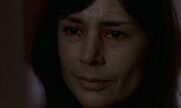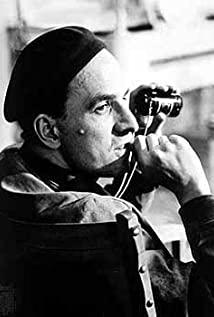Bergman's films can always bring some new shocks. Quietness can be so eerie, yet there is a hint of warmth in despair.
1. Plot
Shouting and Whispering tells the story of a terminally ill Agnes (Harriet Anderson) suffering from her illness, and her sisters Karin (Ingrid Turing), Maria (Liv Ullman) Played ) and the maid Anna (Carly Selwan) live with Anna, who takes good care of her.
Agnes has always longed for family love, hoping that the three sisters can be intimate, but in fact there is a strong sense of alienation between them . Maria was the youngest daughter whom her mother (also played by Liv Uman) loved most before her death, but she was not satisfied with this kind of love, but instead dealt with her lover and her husband.
During the period Agnes died of illness, the family discussed the details of the funeral. Then Karin's relationship with her husband was at an impasse, she was indifferent and depressed, and even killed herself with shards of glass . Maria took the initiative to come to Karin to tell her sincerity, hoping that the estrangement between the two would disappear. On the surface, it seemed that a reconciliation had been reached.
Then Anna suddenly heard a burst of crying, and Agnes actually came back to life, which terrified Karin and Maria, and only Anna hugged her. The film ends with Agnes' narration, as Anna flips through Agnes' diary to see her depicting memories of the three sisters getting along together.
2. Color
The colors in the film are a highlight. Compared to the usual movie transitions where the picture fades in and out to black, Bergman chose a striking red. In addition, the wallpaper, carpet, curtains, bedside and sofa in the set are all red. As for why he chose red, Bergman wrote in the book that from childhood, he believed that the inner part of the soul is red .
As far as Maria is concerned, red represents seduction to her . In the clip of her cheating doctor, she wears a sexy red pajama. Maria's greed for love and infidelity to her husband is her essence, and wearing red here shows her true heart and desires.
And Karin's red is the blood on her mouth after her self-abuse. The red color here is a warning that she self-mutilated her genitals with shards of glass and then deliberately smeared blood all over her mouth in front of her husband, perhaps imitating menstrual bleeding and showing Karin's sense of intimacy with her husband. resist.
Only Agnes is always associated with white in the film, implying that she is on the verge of death, with all the other colors in her life fading , leaving nothing but pallor.
3. Boundaries
The film continues to present a state of ambiguity , where the boundaries between life and death are blurred, just as the few empty shots at the beginning of the film show the dawn —the time of day when the sense of boundaries is at its weakest, blurring day and night.
The first shot of the whole film is a statue playing a lyre, reminiscent of Orpheus in Greek mythology .
Orpheus: Son of the sun god Apollo, he was very talented in music and was good at the lyre. He fell in love with the female fairy Eurydice, but Eurydice died unexpectedly. The infatuated Orpheus broke into hell and moved Hades, the king of the underworld, with the sound of the harp. The king of Hades agreed with Orpheus to bring his wife back to the world. But he was warned not to look back before leaving hell. Approaching the exit of hell, Orpheus couldn't hold back his love. He couldn't help turning around to make sure his wife was following him, but he let Eurydice fall into hell again.
Orpheus's experience of going back and forth between earth and hell corresponds exactly to Agnes' resurrection, and she also crosses the boundary between life and death . And Eurydice corresponds to the mother of the three sisters. After Eurydice's death, Orpheus lost interest in everything, just as the death of his mother was to Agnes. Agnes has always longed for her mother's love, and the only lush natural scenery in the film is accompanied by her mother's appearance, and after her mother's death, everything is overshadowed and faded into an autumn scene.
In addition to this, the lines and language expressions in the film are equally ambiguous. First of all, starting from the title of the film, "shouting" and "whispering" are actually two limited states of language expression, from the Mozart Quartet's music review: "It sounds like shouting and whispering". In what appears to be a reconciliation between Karin and Maria, without their voices, and instead with excerpts from Bach's music, we have no way of knowing what they said.
Likewise, we don't know what the little red book my mother was reading was.
In the clip of Karin's breakdown, where she repeats the phrase: "a lot of lies", we can presume she's talking about an unhappy marriage with her husband, but the movie doesn't specify or explain how she was deceived. Thus, the meaning of language is ambiguous in this film. Bergman deliberately creates an inability of the film to communicate with the audience , so that the audience is more immersed in the communication gap between the sisters that Agnes experienced.
4. Themes
Shouting and Whispering is like a horror movie about people being cut off and isolated and how hard it is to be a loving person. Agnes longs for affection, and after her rebirth, Karin still treats her with indifference. Maria shows her concern at first, but screams in horror when Agnes forcibly kisses her. .
Only Anna, who had lost her daughter, took care of her as family. This scene was inspired by Michelangelo's famous sculpture , Pietà , which depicts the grief scene of the Virgin Mary holding the crucified Christ. Anna is like a Virgin to Agnes. She truly cares and takes care of Agnes as her own daughter.
When Agnes' family was dealing with her funeral, they asked Anna what compensation they wanted. Anna said she didn't need anything but took Agnes' diary. No one else knew what it meant, only Anna Know the value of this diary to her.
Bergman's films are too personal , and many of the details in the films are derived from his personal experiences. For example, he is also very nostalgic for his mother and longs for attention; he is second in the family and is sickly, jealous that his sister stole all the favor from his parents. ; Bergman's brother is a diplomat, his father is a pastor, Karin's profession in the film is a diplomat, and the film has a detailed description of the pastor's work.
The plot of "Shouting and Whispering" is loose, and the characters lack motivation. This article only provides some ideas for understanding, and there is no correct answer. The width and depth of the film need to be experienced by everyone.
references:
Coates, P., 2008. On the Dialectics of Filmic Colors (in general) and Red (in particular): "Three Colors: Red, Red Desert, Cries and Whispers", and "The Double Life of Véronique". Film criticism, 32(3), pp.2–23.
Sitney, PA, 1989. Color and Myth in "Cries and Whispers". Film Criticism, 13(3), pp.37-41.
View more about Cries & Whispers reviews











